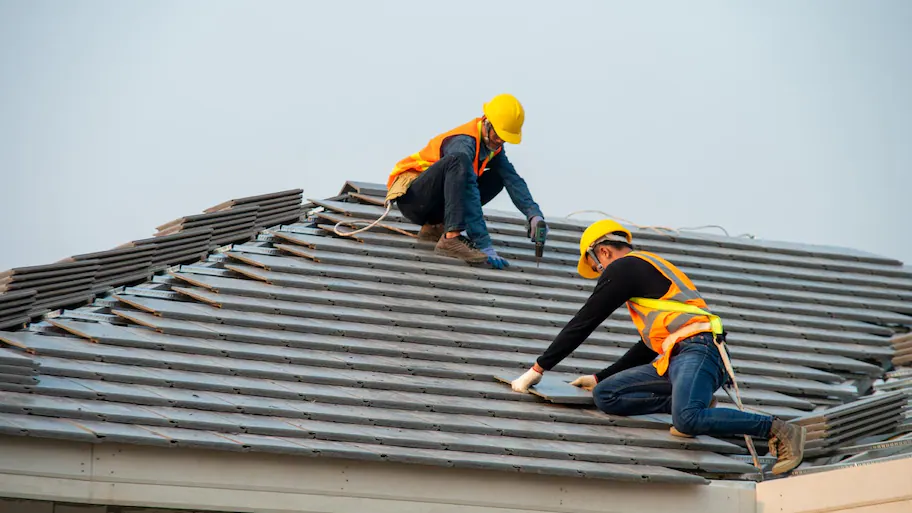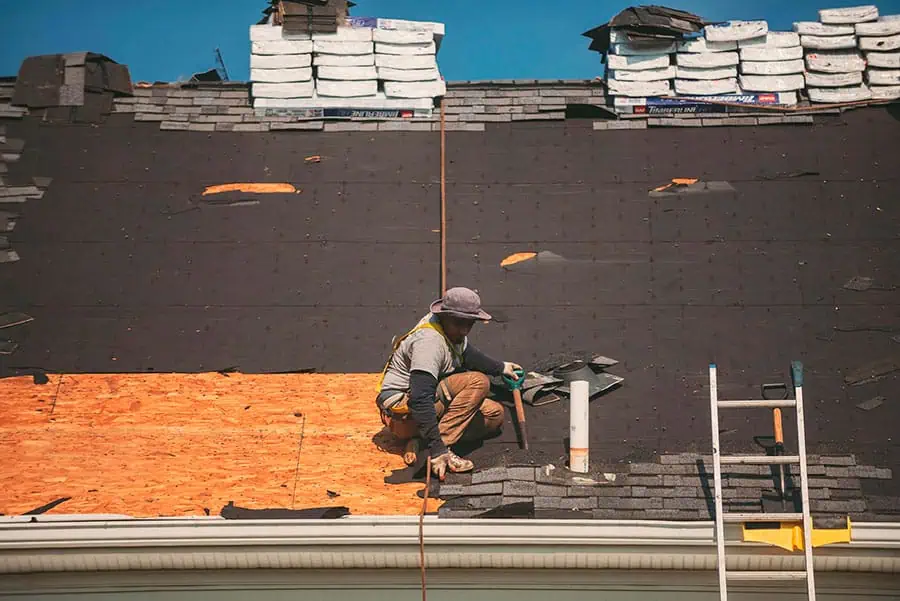Roof Replacement Process

Introduction
Roof replacement is the process of removing an existing roof and installing a new one. This is a critical home improvement task that ensures the structural integrity and safety of a building. Roof replacement is often necessary due to age, weather damage, or to improve energy efficiency and aesthetics.
Types of Roofs
Different types of roofing materials are available, each with its own advantages and disadvantages:
- Asphalt Shingles: Popular for their affordability and ease of installation.
- Metal Roofing: Known for durability and energy efficiency.
- Tile Roofing: Offers a long lifespan and aesthetic appeal, especially in Mediterranean-style homes.
- Wood Shakes and Shingles: Provide a natural look but require more maintenance.
- Slate Roofing: Extremely durable and long-lasting, but also expensive and heavy.
- Flat Roofs: Common in commercial buildings, requiring specific materials like TPO or EPDM.
Preliminary Steps

Inspection and Assessment
A professional inspection is crucial to identify the extent of damage and determine if a full replacement is necessary. This step involves checking for leaks, damaged shingles, and structural issues.
Cost Estimation
Several factors affect the cost of roof replacement, including the size of the roof, materials chosen, and labor costs. It is advisable to obtain multiple quotes from different contractors to ensure a fair price.
Permits and Regulations
Local building codes often require permits for roof replacement. Homeowners should check with their local authorities to ensure compliance with all regulations.
Preparation
Choosing Materials
Selecting the right roofing material is essential. Considerations include climate, budget, and the architectural style of the home. Each material has its own set of pros and cons that should be weighed carefully.
Scheduling the Replacement
Weather conditions and contractor availability are key factors in scheduling a roof replacement. Ideally, the work should be done during a period of dry weather to avoid complications.
Protecting Property
Before the replacement begins, homeowners should move outdoor furniture and cover plants and landscaping to protect them from debris.
Roof Replacement Process

Removal of Old Roofing
The first step in the replacement process is tearing off the old roofing materials. This includes removing shingles, underlayment, and any damaged decking. Proper disposal of debris is essential to maintain a clean worksite.
Inspection of Roof Deck
Once the old materials are removed, the roof deck is inspected for damage. Any rotten or damaged sections are repaired or replaced to ensure a solid foundation for the new roof.
Installation of Underlayment
Underlayment is a critical layer that provides additional protection against water infiltration. Different types of underlayment, such as felt or synthetic materials, are available.
Installation of New Roofing Material
The new roofing material is installed according to manufacturer specifications. This process varies depending on the type of material but generally involves laying down shingles, tiles, or metal panels in a specific pattern.
Flashing and Ventilation
Proper flashing around chimneys, vents, and other protrusions is essential to prevent leaks. Adequate ventilation is also crucial to extend the life of the roof and improve energy efficiency.
Post-Installation
Final Inspection
A thorough inspection is conducted to ensure the new roof meets quality standards and complies with local building codes. Any issues identified are addressed promptly.
Clean-Up
All debris is removed from the property, and a final check is performed to ensure the area is clean and safe.
Warranty and Maintenance
Homeowners should understand the warranty provided by the roofing contractor and the manufacturer. Regular maintenance, such as cleaning gutters and inspecting for damage, is essential to prolong the life of the new roof.
Common Challenges and Solutions
- Weather Delays: Scheduling flexibility and contingency plans can mitigate weather-related delays.
- Unexpected Damage: Additional repairs may be necessary if unforeseen damage is discovered during the replacement process.
- Material Shortages: Ordering materials in advance and having backup options can help avoid delays.
- Contractor Issues: Choosing a reputable contractor with good references can prevent many common problems.
Safety Considerations
- Safety Gear and Equipment: Proper safety gear, such as helmets and harnesses, is essential for workers.
- Fall Protection: Measures like guardrails and safety nets should be in place to prevent falls.
- Hazardous Material Handling: Proper procedures should be followed when handling materials like asbestos.
Environmental Considerations
- Recycling Old Materials: Many roofing materials can be recycled, reducing environmental impact.
- Energy-Efficient Roofing Options: Choosing materials with high energy efficiency can reduce heating and cooling costs.
- Sustainable Practices: Opting for sustainable materials and practices can contribute to environmental conservation.
Conclusion
The roof replacement process is a significant investment that enhances the safety, functionality, and appearance of a home. By understanding the steps involved and choosing the right materials and contractors, homeowners can ensure a successful and long-lasting roof replacement.
